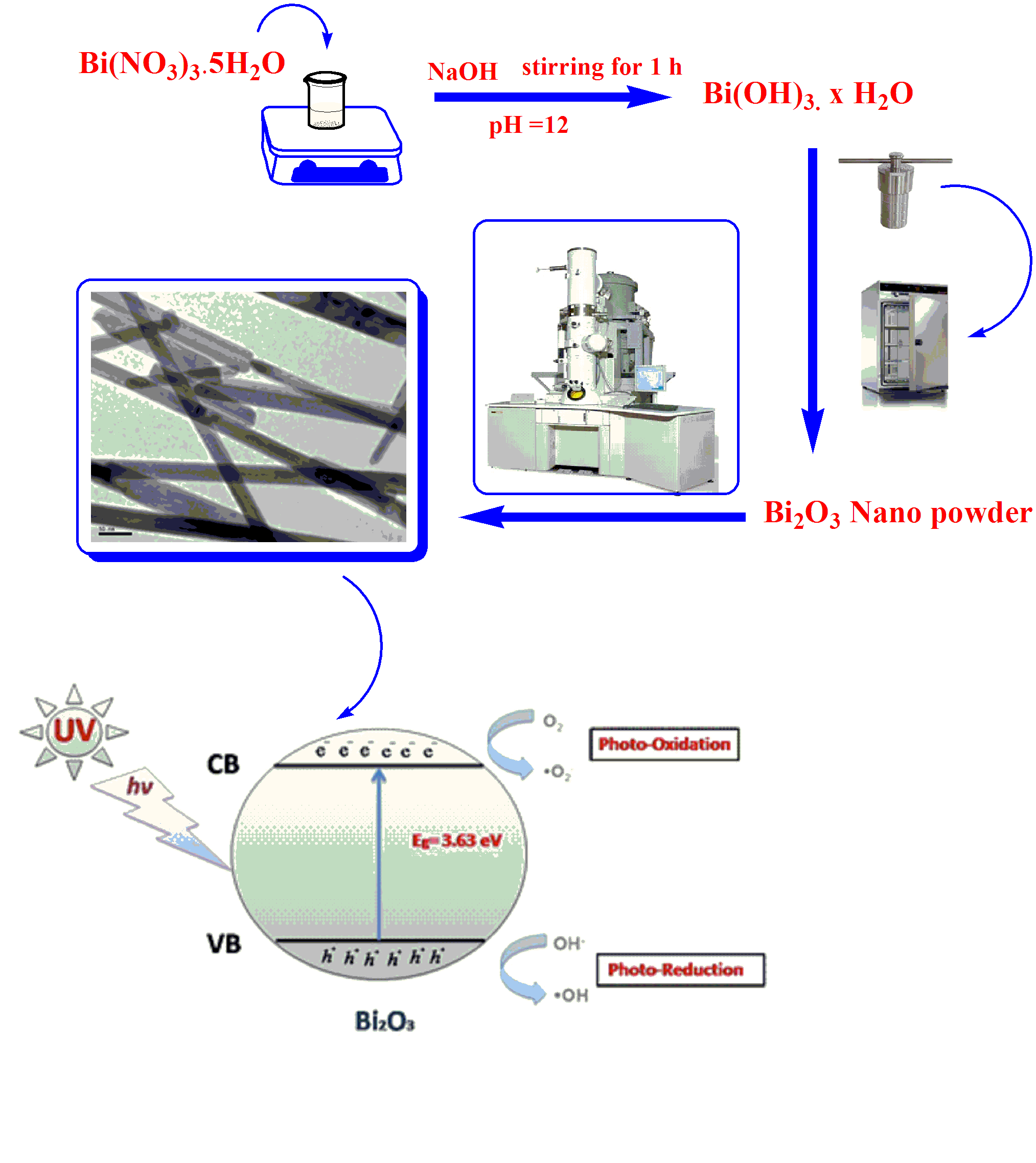In this study, Monoclinic bismuth oxide nanorods (α-Bi2O3 NRs) were successfully synthesized by a simple one-step hydrothermal route using (water: ethanol) (1:1) as a mixed solvents at optimum conditions. The Bi2O3 nano-powder was characterized in detail by different techniques in terms of their structural, morphological, compositional, optical and photocatalytic properties. X-ray diffraction (XRD) analysis indicated that the as-synthesized Bi2O3 NRs exhibited high purity with monoclinic structure (α-Bi2O3) and good crystallinity. The Transmission electron microscope (TEM), Energy dispersive x-ray spectroscopy (EDXS) and Field Emission scanning electron microscope (FE-SEM) analysis clearly confirmed the high purity and the nanorod morphology of the as-synthesized Bi2O3 sample. The optical band gap of α-Bi2O3 NRs was estimated using the UV–Vis diffuse reflectance spectroscopy (UV–Vis DRS) analysis according to the Kubelka–Munk theory. The optical band gap of α-Bi2O3 NRs was found to be 3.55 eV for an indirect allowed transition and 3.63 eV for a direct allowed transition. The Fourier transfer infrared spectroscopy (FTIR) was employed to check the structure as well as to evaluate the phonon vibration modes corresponding to Bi2O3. Photocatalytic activity of α-Bi2O3 NRs was investigated using UV source lamp. The as-synthesized α-Bi2O3 NRs photocatalyst exhibited better performance for degradation and decolorization of Methylene blue (MB) under ultraviolet (UV) irradiation. MB was completely photodegraded after 210 min under UV irradiation using α-Bi2O3 NRs as photocatalyst.


